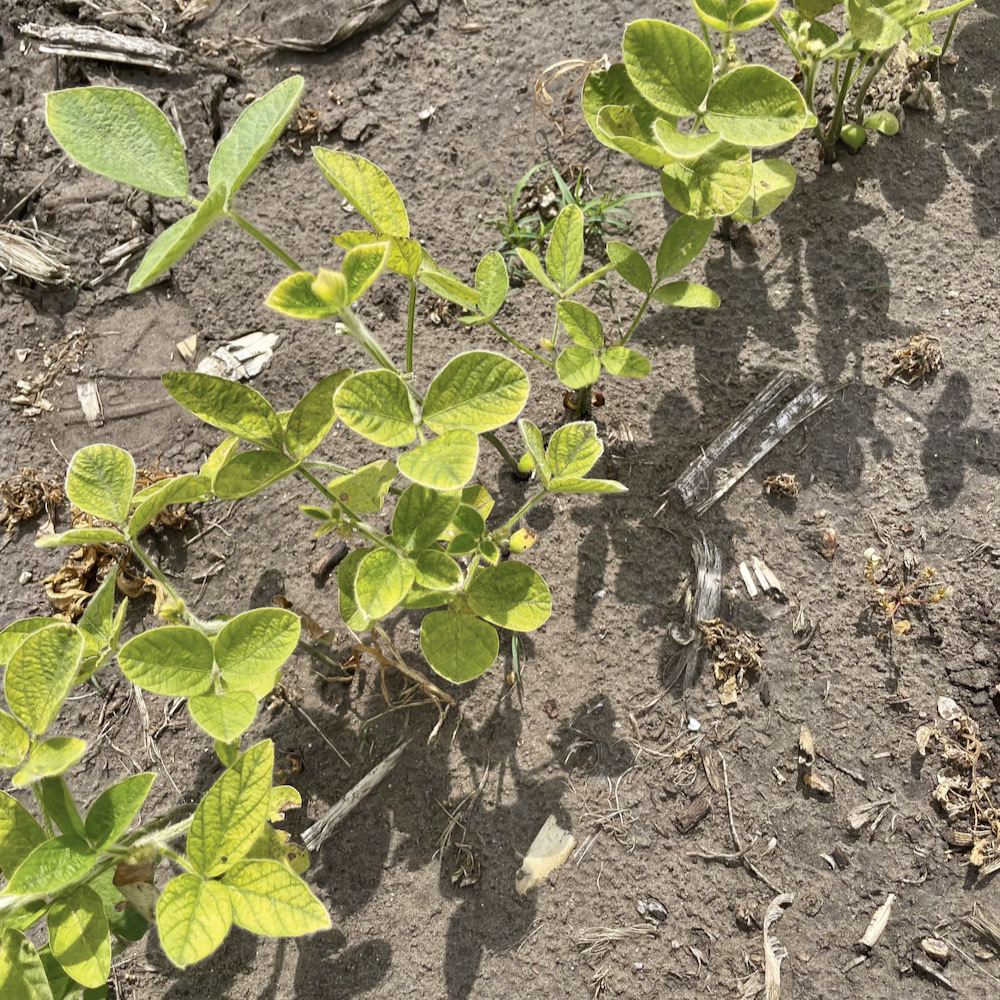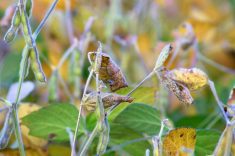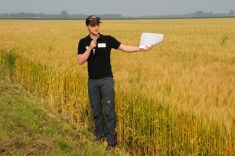Manitoba’s map of municipalities with confirmed soybean cyst nematode (SCN) will have to expand.
In mid-July, Mario Tenuta of the University of Manitoba confirmed that SCN had been identified in a field in the R.M. of Thompson, an area that had not previously reported the presence of the troubling pest.
The finding comes after the farmer and agronomist became concerned with yellowed and stunted plants on the headlands of one field, Tenuta said.
Read Also

Canadian hemp stable, but stuck on growth
Canada’s hemp industry hopes hybrid varieties, better yields, clearer regulations and new markets can help the crop break past its ceiling and get Canadian farmers planting more hemp acres.
Upon investigation, roots showed signs of cysts, while molecular DNA testing later confirmed that the issue was SCN.
“They were actually very full of cysts — a lot of cysts. I was quite shocked, actually,” Tenuta said.
Why it matters: While experts have warned producers that the province’s honeymoon period on SCN will one day draw to a close, it is the first time that above-ground symptoms of SCN have been noted
The presence of SCN in and of itself is not a surprise. Well-established in the U.S., soybean agronomists have long warned that the yield-eating roundworm, which targets soybean roots, would eventually find its way north to Manitoba.

Tenuta’s work has, thus far, provided much of the basis for tracking SCN in the province. From 2012 to 2019, his team conducted several rounds of surveying, including a survey of 106 fields with a history of soybeans in 18 municipalities in central Manitoba and the Red River Valley.
Tenuta’s efforts found four fields with SCN, largely along the Canada-U.S border in the municipalities of Rhineland, Emerson-Franklin and Montcalm, although one positive field in the R.M. of Norfolk Treherne, far removed from the others, suggested the possibility that there might be unsurveyed fields infected in other regions.
In all of those cases, however, nematode levels were low, and there were no above-ground symptoms.
Tests found two cysts, one cyst and two cases of 14 cysts per five pounds of soil, something that researchers noted was a far cry from regions where SCN has been a longstanding problem. Fields in Ontario and heavily infected parts of the U.S., for example, might instead see 3,000 to 4,000 cysts in the same amount of soil.
This time, Tenuta said, populations were higher.
Tests found 32 cysts and 1,350 eggs per 100 millilitres of soil.
“That’s a decent amount of presence of the nematodes,” Tenuta said, noting that the field had only five years of soybean history, and one of edible beans.
SCN is among the most infamous soybean pests in the United States, causing an estimated US$1.5 billion worth of yield loss a year. According to the Manitoba Pulse and Soybean Growers, SCN can be linked to up to 30 per cent yield loss by the time above-ground symptoms appear.
But for all that reported damage, it’s not the easiest issue to identify without digging and lab tests.

Also known for its mimic of other issues, SCN infection may appear as drought stress, as stunted or chlorotic plants or as poor nutrition.
One sign, according to Laura Schmidt, agronomist with the Manitoba Pulse and Soybean Growers (MPSG), might be apparent iron deficiency chlorosis that plants never grow out of.
Below the soil surface, however, farmers will be able to see the cysts themselves. While fragile — agronomists will tell the farmer to carefully dig and rinse roots when scouting — infected plants will develop whitish and lemon-shaped cysts, too small to be root nodules.
Schmidt noted that dry conditions this year have presented more chance for symptoms to appear, particularly in sandier soils.
“That’s kind of what the case was here,” she said of the newly discovered SCN case.
Tenuta noted that the nematode tends to exacerbate drought stress, making sandy soils in dry years prime candidates for first showing symptoms.
The MPSG is using the recent confirmation to increase aware- ness of the pest and encourage producers to investigate poor stands, which might otherwise simply be dismissed as drought or heat stress.
Growers can also test for SCN on their own through Agvise if they encounter suspicious symptoms, Schmidt noted.
Management
Much like clubroot in canola, SCN is a difficult pest to halt once spread has begun. Any movement of soil will also spread the nematode, while management practices such as thoroughly washing equipment between fields is both a nuisance and logistical challenge for producers.
Washing equipment between fields on the same farm may well not be feasible, Schmidt said. At the same time, however, producers may well want to think of that kind of biosecurity when equipment moves in between farms, or when any new piece of equipment is brought in. In particular, she said, it should be on a farmer’s radar if equipment is coming up from the U.S. or any other area where SCN is established.
Early detection will also inform the producer of any fields where they should take particular caution not to move dirt, she added.

Agronomists have also tagged practices like weed control to avoid pest bridges by eliminating host weed species, crop rotation and the integration of resistant varieties for SCN control.
Producers “should certainly be keeping an eye out and looking for the warning signs,” Schmidt said. “So far, we don’t have high population levels.”
The key for SCN management, she said, is early detection and preventative action.
“There are quite a few other host crops and host weeds that it can reproduce on, so if we can catch these fields when cyst levels are relatively low, we know that we need to target those specific weeds when they are cropping up in the field and we also know what we can do rotationally to kind of manage it before those cyst levels explode,” she said.
Next steps
With a new area testing positive, Tenuta says it may be worthwhile to survey again.
Work in regards to the confirmed case in the R.M. of Thompson will now turn to genetic screening. Those tests will help determine which resistance genes will be effective against local SCN populations, Tenuta said.
In addition, his team will be working to determine SCN distribution within the field itself.
“It it’s in one spot of the field, then that means that it hasn’t spread,” he said. “If it’s in more areas of the field, but maybe in lower levels, some year in the future it’s going to be a problem in the whole field, and they’ll see a yield hit… we’ve got a lot of just fundamental work to do.”
















